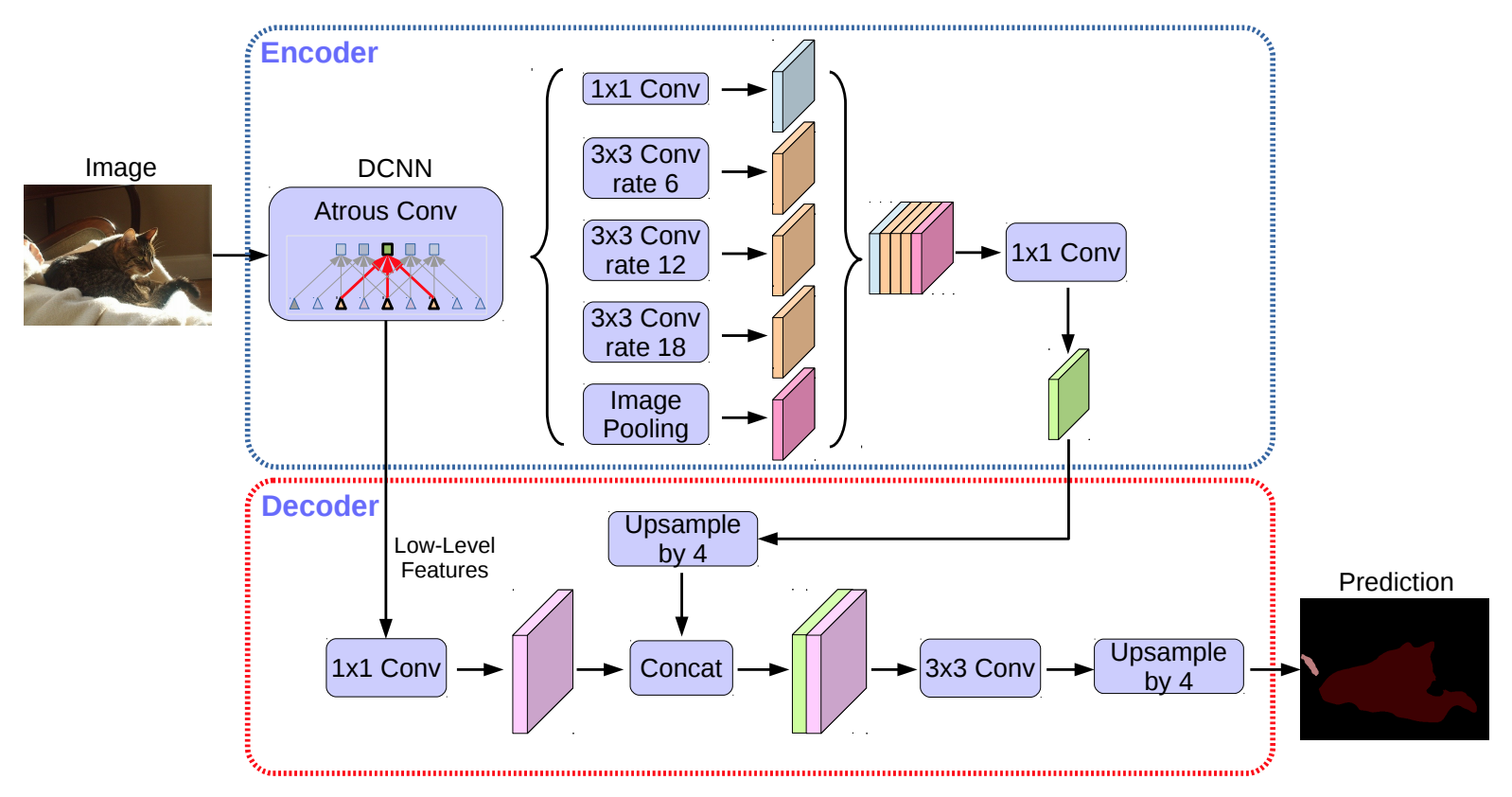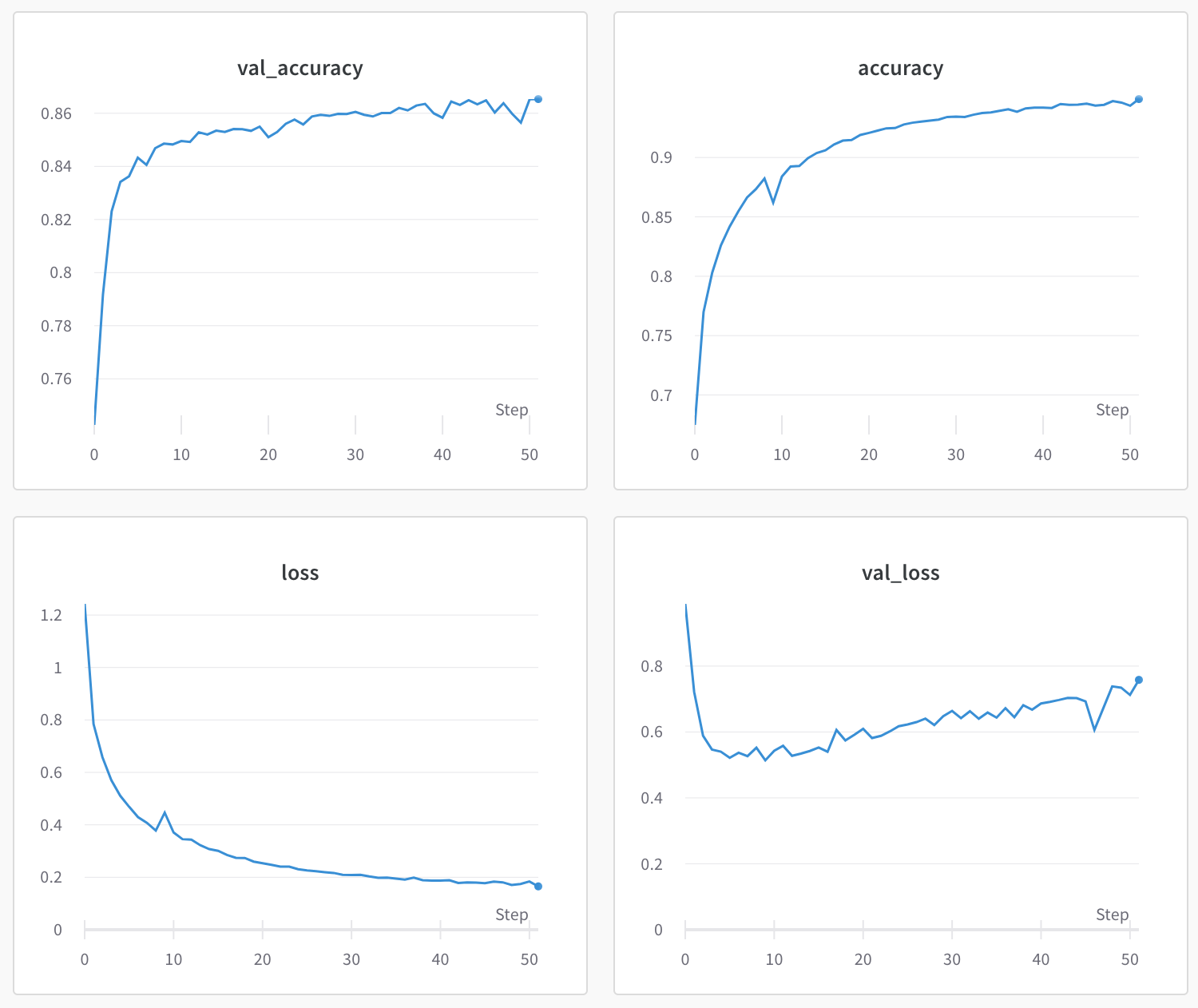lattice-ai / Deeplabv3 Plus
Tensorflow 2.3.0 implementation of DeepLabV3-Plus
Stars: ✭ 32
Projects that are alternatives of or similar to Deeplabv3 Plus
Multiclass Semantic Segmentation Camvid
Tensorflow 2 implementation of complete pipeline for multiclass image semantic segmentation using UNet, SegNet and FCN32 architectures on Cambridge-driving Labeled Video Database (CamVid) dataset.
Stars: ✭ 67 (+109.38%)
Mutual labels: jupyter-notebook, segmentation, semantic-segmentation
Hrnet Semantic Segmentation
The OCR approach is rephrased as Segmentation Transformer: https://arxiv.org/abs/1909.11065. This is an official implementation of semantic segmentation for HRNet. https://arxiv.org/abs/1908.07919
Stars: ✭ 2,369 (+7303.13%)
Mutual labels: segmentation, semantic-segmentation, cityscapes
Icnet Tensorflow
TensorFlow-based implementation of "ICNet for Real-Time Semantic Segmentation on High-Resolution Images".
Stars: ✭ 396 (+1137.5%)
Mutual labels: jupyter-notebook, semantic-segmentation, cityscapes
Cascaded Fcn
Source code for the MICCAI 2016 Paper "Automatic Liver and Lesion Segmentation in CT Using Cascaded Fully Convolutional NeuralNetworks and 3D Conditional Random Fields"
Stars: ✭ 296 (+825%)
Mutual labels: jupyter-notebook, segmentation, semantic-segmentation
Lightnet
LightNet: Light-weight Networks for Semantic Image Segmentation (Cityscapes and Mapillary Vistas Dataset)
Stars: ✭ 698 (+2081.25%)
Mutual labels: segmentation, semantic-segmentation, cityscapes
3dunet abdomen cascade
Stars: ✭ 91 (+184.38%)
Mutual labels: jupyter-notebook, segmentation, semantic-segmentation
Efficient Segmentation Networks
Lightweight models for real-time semantic segmentationon PyTorch (include SQNet, LinkNet, SegNet, UNet, ENet, ERFNet, EDANet, ESPNet, ESPNetv2, LEDNet, ESNet, FSSNet, CGNet, DABNet, Fast-SCNN, ContextNet, FPENet, etc.)
Stars: ✭ 579 (+1709.38%)
Mutual labels: segmentation, semantic-segmentation, cityscapes
Keras Segmentation Deeplab V3.1
An awesome semantic segmentation model that runs in real time
Stars: ✭ 156 (+387.5%)
Mutual labels: jupyter-notebook, segmentation, semantic-segmentation
LightNet
LightNet: Light-weight Networks for Semantic Image Segmentation (Cityscapes and Mapillary Vistas Dataset)
Stars: ✭ 710 (+2118.75%)
Mutual labels: segmentation, semantic-segmentation, cityscapes
Erfnet pytorch
Pytorch code for semantic segmentation using ERFNet
Stars: ✭ 304 (+850%)
Mutual labels: segmentation, semantic-segmentation, cityscapes
Steal
STEAL - Learning Semantic Boundaries from Noisy Annotations (CVPR 2019)
Stars: ✭ 424 (+1225%)
Mutual labels: jupyter-notebook, semantic-segmentation
Fsgan
FSGAN - Official PyTorch Implementation
Stars: ✭ 420 (+1212.5%)
Mutual labels: jupyter-notebook, segmentation
Probabilistic unet
A U-Net combined with a variational auto-encoder that is able to learn conditional distributions over semantic segmentations.
Stars: ✭ 427 (+1234.38%)
Mutual labels: jupyter-notebook, semantic-segmentation
Pytorch Unet
Simple PyTorch implementations of U-Net/FullyConvNet (FCN) for image segmentation
Stars: ✭ 470 (+1368.75%)
Mutual labels: jupyter-notebook, semantic-segmentation
Fasterseg
[ICLR 2020] "FasterSeg: Searching for Faster Real-time Semantic Segmentation" by Wuyang Chen, Xinyu Gong, Xianming Liu, Qian Zhang, Yuan Li, Zhangyang Wang
Stars: ✭ 438 (+1268.75%)
Mutual labels: semantic-segmentation, cityscapes
Vpgnet
VPGNet: Vanishing Point Guided Network for Lane and Road Marking Detection and Recognition (ICCV 2017)
Stars: ✭ 382 (+1093.75%)
Mutual labels: jupyter-notebook, semantic-segmentation
Tusimple Duc
Understanding Convolution for Semantic Segmentation
Stars: ✭ 567 (+1671.88%)
Mutual labels: semantic-segmentation, cityscapes
Fbrs interactive segmentation
[CVPR2020] f-BRS: Rethinking Backpropagating Refinement for Interactive Segmentation https://arxiv.org/abs/2001.10331
Stars: ✭ 366 (+1043.75%)
Mutual labels: jupyter-notebook, segmentation
Superpoint graph
Large-scale Point Cloud Semantic Segmentation with Superpoint Graphs
Stars: ✭ 533 (+1565.63%)
Mutual labels: segmentation, semantic-segmentation
Bisenet
Add bisenetv2. My implementation of BiSeNet
Stars: ✭ 589 (+1740.63%)
Mutual labels: segmentation, cityscapes
DeepLabV3-Plus (Ongoing)
Tensorflow 2.2.0 implementation of DeepLabV3-Plus architecture as proposed by the paper Encoder-Decoder with Atrous Separable Convolution for Semantic Image Segmentation.
Project Link: https://github.com/deepwrex/DeepLabV3-Plus/projects/.
Experiments: https://app.wandb.ai/19soumik-rakshit96/deeplabv3-plus.
Model Architectures can be found here.
Setup Datasets
-
CamVid
cd dataset bash camvid.sh -
Multi-Person Human Parsing
Register on https://www.kaggle.com/.
Generate Kaggle API Token
bash download_human_parsing_dataset.sh <kaggle-username> <kaggle-key>
Code to test Model
from deeplabv3plus.model.deeplabv3_plus import DeeplabV3Plus
model = DeepLabV3Plus(backbone='resnet50', num_classes=20)
input_shape = (1, 512, 512, 3)
input_tensor = tf.random.normal(input_shape)
result = model(input_tensor) # build model by one forward pass
model.summary()
Training
Use the trainer.py script as documented with the help description below:
usage: trainer.py [-h] [--wandb_api_key WANDB_API_KEY] config_key
Runs DeeplabV3+ trainer with the given config setting.
Registered config_key values:
camvid_resnet50
human_parsing_resnet50
positional arguments:
config_key Key to use while looking up configuration from the CONFIG_MAP dictionary.
optional arguments:
-h, --help show this help message and exit
--wandb_api_key WANDB_API_KEY
Wandb API Key for logging run on Wandb.
If provided, checkpoint_dir is set to wandb://
(Model checkpoints are saved to wandb.)
If you want to use your own custom training configuration, you can define it in the following way:
-
Define your configuration in a python dictionary as follows:
config/camvid_resnet50.py
#!/usr/bin/env python
"""Module for training deeplabv3plus on camvid dataset."""
from glob import glob
import tensorflow as tf
# Sample Configuration
CONFIG = {
# We mandate specifying project_name and experiment_name in every config
# file. They are used for wandb runs if wandb api key is specified.
'project_name': 'deeplabv3-plus',
'experiment_name': 'camvid-segmentation-resnet-50-backbone',
'train_dataset_config': {
'images': sorted(glob('./dataset/camvid/train/*')),
'labels': sorted(glob('./dataset/camvid/trainannot/*')),
'height': 512, 'width': 512, 'batch_size': 8
},
'val_dataset_config': {
'images': sorted(glob('./dataset/camvid/val/*')),
'labels': sorted(glob('./dataset/camvid/valannot/*')),
'height': 512, 'width': 512, 'batch_size': 8
},
'strategy': tf.distribute.OneDeviceStrategy(device="/gpu:0"),
'num_classes': 20, 'backbone': 'resnet50', 'learning_rate': 0.0001,
'checkpoint_dir': "./checkpoints/",
'checkpoint_file_prefix': "deeplabv3plus_with_resnet50_",
'epochs': 100
}
-
Save this file inside the configs directory. (As hinted in the file path above)
-
Register your config in the
__init.py__module like below:
config/__init__.py
#!/usr/bin/env python
# -*- coding: utf-8 -*-
"""__init__ module for configs. Register your config file here by adding it's
entry in the CONFIG_MAP as shown.
"""
import config.camvid_resnet50
import config.human_parsing_resnet50
CONFIG_MAP = {
'camvid_resnet50': config.camvid_resnet50.CONFIG, # the config file we defined above
'human_parsing_resnet50': config.human_parsing_resnet50.CONFIG # another config
}
-
Now you can run the trainer script like so (using the
camvid_resnet50config key we registered above):
./trainer.py camvid_resnet50 --wandb_api_key <YOUR_WANDB_API_KEY>
or, if you don't need wandb logging:
./trainer.py camvid_resnet50
Inference
Sample Inference Code:
model_file = './dataset/deeplabv3-plus-human-parsing-resnet-50-backbone.h5'
train_images = glob('./dataset/instance-level_human_parsing/Training/Images/*')
val_images = glob('./dataset/instance-level_human_parsing/Validation/Images/*')
test_images = glob('./dataset/instance-level_human_parsing/Testing/Images/*')
def plot_predictions(images_list, size):
for image_file in images_list:
image_tensor = read_image(image_file, size)
prediction = infer(
image_tensor=image_tensor,
model_file=model_file
)
plot_samples_matplotlib(
[image_tensor, prediction], figsize=(10, 6)
)
plot_predictions(train_images[:4], (512, 512))
Results
Multi-Person Human Parsing
Training Set Results
Validation Set Results
Test Set Results
Citation
@misc{1802.02611,
Author = {Liang-Chieh Chen and Yukun Zhu and George Papandreou and Florian Schroff and Hartwig Adam},
Title = {Encoder-Decoder with Atrous Separable Convolution for Semantic Image Segmentation},
Year = {2018},
Eprint = {arXiv:1802.02611},
}
Note that the project description data, including the texts, logos, images, and/or trademarks,
for each open source project belongs to its rightful owner.
If you wish to add or remove any projects, please contact us at [email protected].














